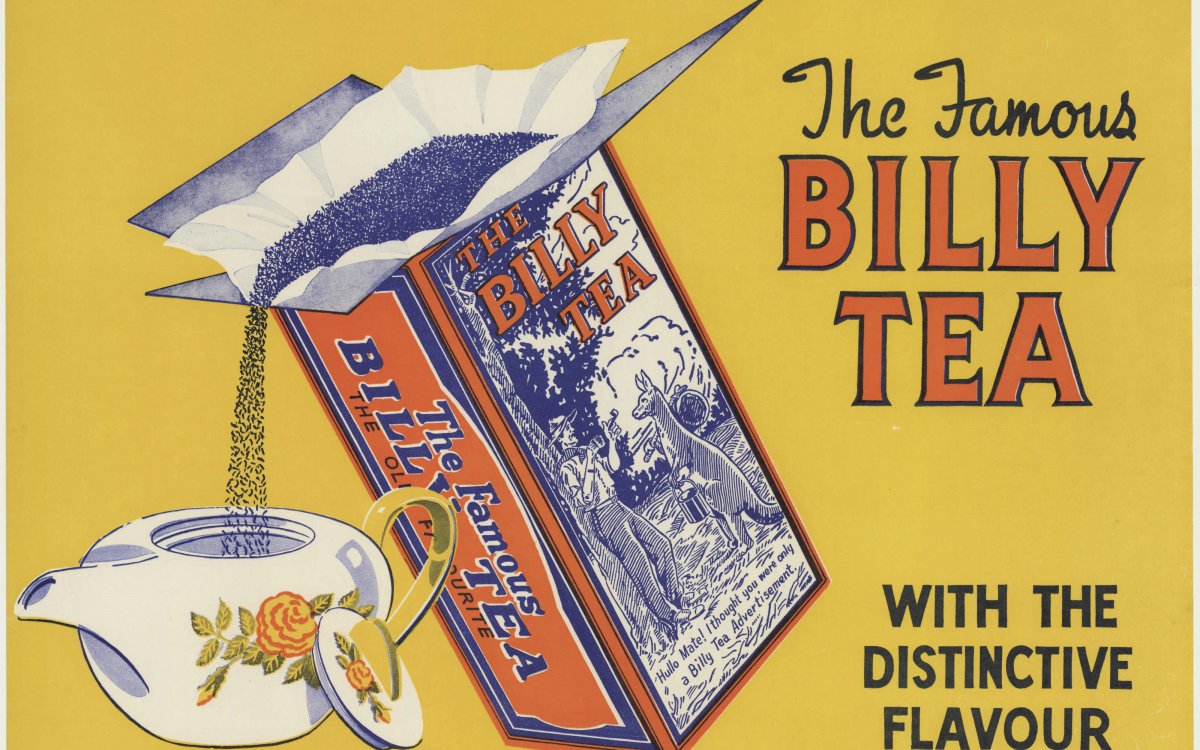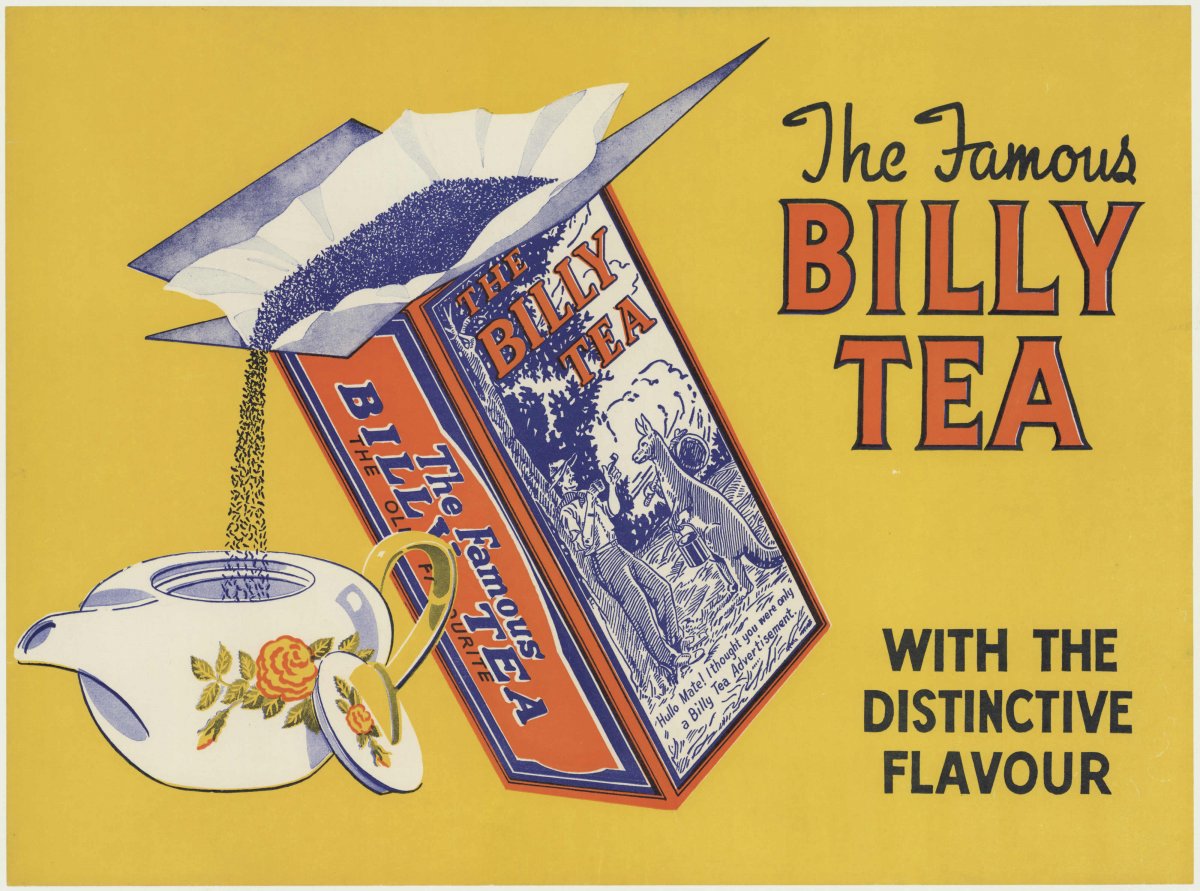This resource has been generously supported by Optus. Through the Digital Thumbprint program and Kids Helpline @ School, Optus supports digital knowledge and the positive use of technology.

(1930). The famous Billy Tea : with the distinctive flavour. https://nla.gov.au/nla.obj-138235161
British tea culture, imported with the arrival of the British in Australia in 1788, has been adapted by Australians into something distinct from its roots. One of the key early differences is the use of the ‘billy’, a lightweight metal can used most commonly for boiling water or cooking over a campfire.
To advertise its tea, the Billy Tea Company used on its packet an image of a swagman, or ‘swaggie’, boiling his billy. Early in the twentieth century, Billy Tea’s owner James Inglis purchased the rights to the song Waltzing Matilda. Some of Banjo Paterson’s original words of Waltzing Matilda were changed for an arrangement of the song, which was published in 1905 and was the earliest printed version of the song. Marie Cowan, the wife of Billy Tea’s manager, was credited on the cover as having arranged the music.
- Have students compare the original lyrics with those published in Marie Cowan's version. Which lines have changed?
- To what extent has the change been influenced by the Billy Tea Company?
Inglis, with an eye for advertising opportunities, proposed to include a free copy of the newly arranged sheet music of Waltzing Matilda with every packet of tea sold.
- This is an example of the importance of the medium of music in advertising. Use a data projector or smartboard to explore this YouTube playlist for more examples of music used in advertising from The Sell.
Robur Tea
Australian tea company Robur Tea was a prolific advertiser in magazines and newspapers, and on maps and posters. During the 1910s and in the early 1920s, it advertised on the back cover of the women’s magazine, Everylady’s Journal. For the exhibition, The Sell, the National Library has digitised over 30 of them, dating between 1916 and 1920, to highlight techniques used—photography, drawing and the simple use of red and black—to sell one product. Common themes in the ads are economy and class, and the comfort tea could provide. These copies of Everylady’s Journal were well used and have been left in their original state, doodles and all.
Robur Tea
Australian tea company Robur Tea was a prolific advertiser in magazines and newspapers, and on maps and posters. During the 1910s and in the early 1920s, it advertised on the back cover of the women’s magazine, Everylady’s Journal. For the exhibition, The Sell, the National Library has digitised over 30 of them, dating between 1916 and 1920, to highlight techniques used—photography, drawing and the simple use of red and black—to sell one product. Common themes in the ads are economy and class, and the comfort tea could provide. These copies of Everylady’s Journal were well used and have been left in their original state, doodles and all.
Advertising for tea shows us the ways in which Australians have used the drink and how it has been marketed to them.
- Have students prepare a short written response that compares and contrasts the advertising campaigns of the Billy Tea Company and Robur Tea.
- Did the campaigns try to appeal to the same audience?
- What qualities of the tea did each campaign emphasise?
- Were these qualities also supposed to be present in the customer?
